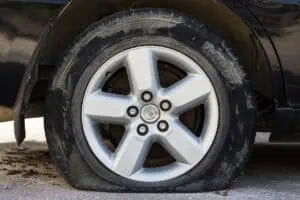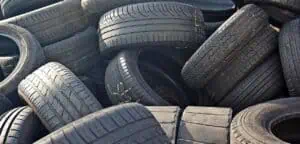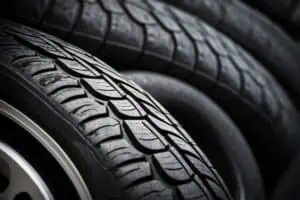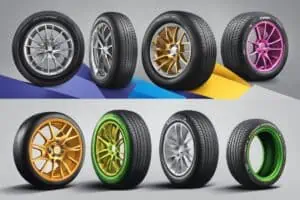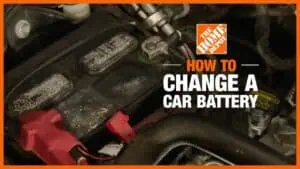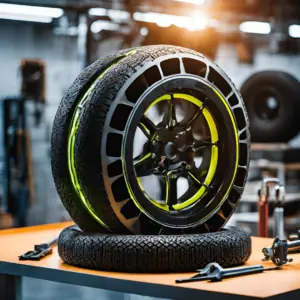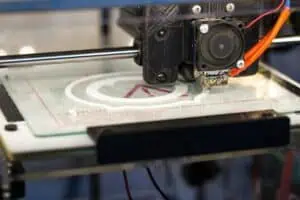When it comes to the word self regenerating do you think of money? If by any chance you said yes then maybe that’s because that’s common. Introducing self regenerating rubber on tires, where you’d also save your money with long lasting tires.
Trust me, this isn’t your grandpa’s tire tech – we’re talking about some seriously cutting-edge stuff that’s set to revolutionize how we think about and use tires. So, let’s roll into this fascinating topic and explore the differences between self-regenerating tire rubber and self-regenerating tire treading.
The Basics: What Are We Dealing With?
Before we get our hands dirty with the nitty-gritty details, let’s break down what we mean by self-regenerating tire technologies. In essence, we’re looking at two main approaches:
- Self-Regenerating Tire Rubber: This involves the tire’s ability to heal and repair itself at a molecular level.
- Self-Regenerating Tire Treading: This focuses on the tire’s outer layer, allowing it to regrow or replenish worn-out treads. More about this here at Self-Regenerating Treads: The Future of Technology
Now, I know what you’re thinking – “Is this some sci-fi mumbo jumbo?” Nope! This is real-world tech that’s been cooking in labs and is starting to hit the roads. Let’s dive deeper, shall we?
Self-Regenerating Tire Rubber: The Molecular Miracle
How It Works
Self-regenerating tire rubber is like giving your tires a superpower – the ability to heal themselves. Here’s the lowdown:
- Materials Used: Scientists are working with advanced polymers and compounds that can reconnect at a molecular level when broken.
- The Tech Behind It: When a cut or puncture occurs, the rubber rebuilds itself through chemical ionic bonds. It’s like giving your tire a bunch of tiny molecular handshakes to patch things up.
Benefits
- Longer Tire Life: Less need for replacements means your tires stick around longer.
- Improved Safety: Reduces the risk of sudden blowouts from small punctures.
- Convenience: Imagine not having to worry about every little nail on the road!
Drawbacks
- Cost: As with any new tech, it’s likely to be pricier upfront.
- Limited Healing Capacity: It’s great for small punctures, but don’t expect it to fix a massive gash.
Self-Regenerating Tire Treading: The Surface Solution
How It Works
This is where things get really interesting. Self-regenerating treading is like giving your tires a constant makeover. Here’s the scoop:
- Materials Used: We’re talking about compounds that can be “recharged” or replenished over time.
- The Tech Behind It: Some concepts, like Goodyear’s reCharge, use capsules filled with a liquid compound that can regenerate the tread.
Benefits
- Customization: Imagine being able to adapt your tire treads to different conditions without changing tires!
- Reduced Waste: Less need to replace entire tires means less rubber in landfills.
- Optimal Performance: Your tires could always be at their best tread depth.
Drawbacks
- Complexity: More moving parts mean more potential points of failure.
- Regulatory Hurdles: New tech often faces challenges with existing safety regulations.
Real-World Applications: Are We There Yet?
Now, I know you’re itching to know if you can get your hands on these miracle tires. Well, we’re not quite there yet, but we’re getting close:
- Self-Healing Rubber: Some tire manufacturers are already incorporating self-healing properties into their products. For instance, Continental uses ContiSeal technology, which can seal punctures up to 5mm in diameter.
- Regenerating Treads: While still largely conceptual, companies like Goodyear are actively developing prototypes like the reCharge concept tire.
Environmental Impact: Green Wheels?
Let’s face it, we all want to do our part for Mother Earth. So how do these technologies stack up environmentally?
- Reduced Waste: Both technologies aim to extend tire life, which means fewer tires in landfills.
- Material Considerations: Self-regenerating rubber often uses biodegradable materials, which is a big plus.
- Energy Efficiency: Maintaining optimal tread depth could lead to better fuel efficiency in vehicles.
The Future: What’s Down the Road?
Alright, let’s put on our futurist hats for a moment. Where is this all heading?
- Integration with Smart Tire Technology: Imagine self-regenerating tires that can communicate with your vehicle to optimize performance.
- Sustainable Materials: The push towards using more eco-friendly, renewable resources in tire production is likely to continue.
- Customization on Demand: We might see tires that can change their properties on the fly to suit different driving conditions.
Wrapping It Up: Which One Wins?
So, self-regenerating rubber or self-regenerating treads – which one’s the tire of the future? Well, in my humble opinion, it’s not really an either/or situation. Both technologies have their strengths, and I wouldn’t be surprised if we see a hybrid approach that combines the best of both worlds.
The self-healing rubber gives us that peace of mind for everyday punctures and wear, while regenerating treads offer the exciting possibility of adaptable, long-lasting tire performance. Together, they could create a tire that’s safer, more durable, and more sustainable than anything we’ve seen before.
As for me, I’m excited to see these technologies hit the mainstream. Just imagine – a future where changing a tire is as outdated as using a phone booth! Now that’s a ride I’m looking forward to.
Remember, folks, the rubber meets the road in innovation just as much as it does on the highway. Keep your eyes peeled for these amazing advancements coming to a tire shop near you!


